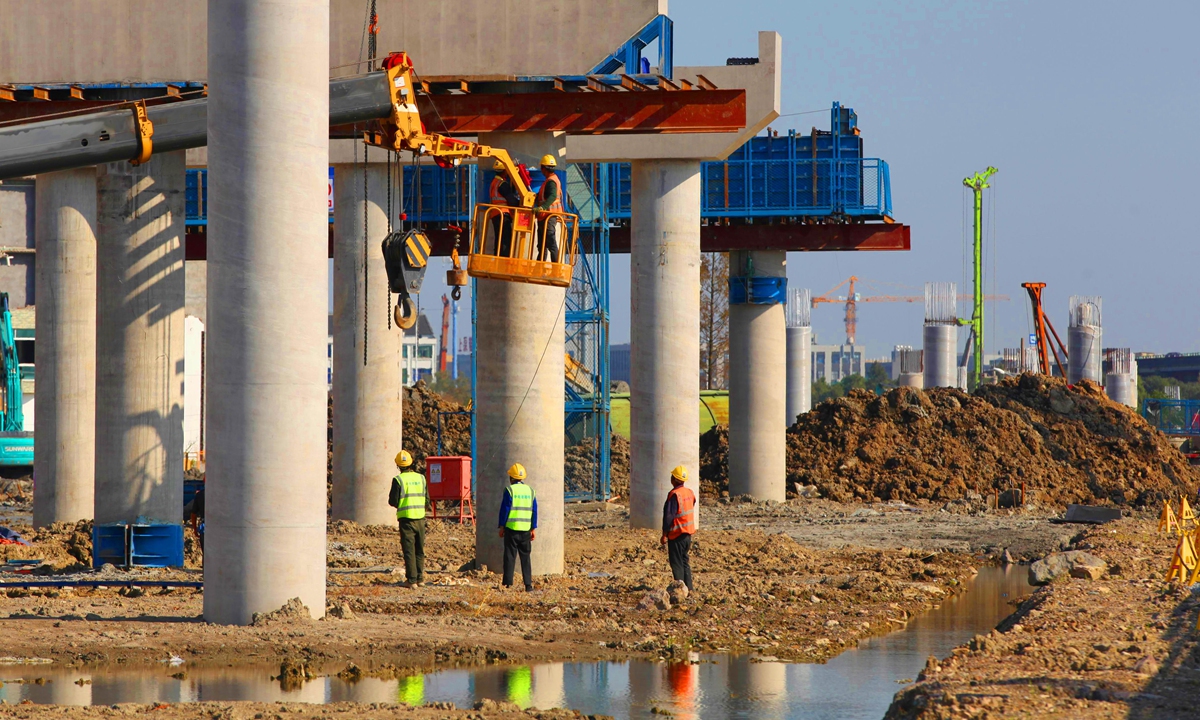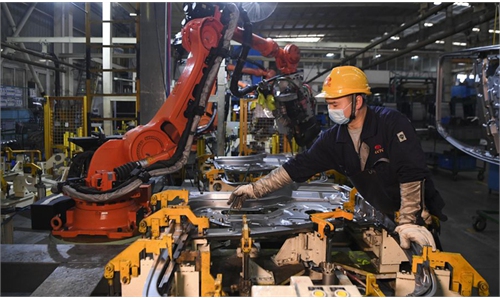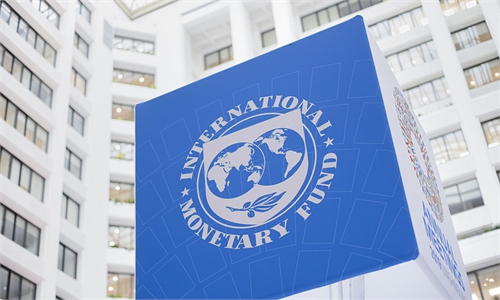China’s Nov data suggest economy is set to meet this year’s growth target
Nov data point to solid recovery despite lingering challenges

Workers at a highway construction site at Wenling, East China's Zhejiang Province on November 15, 2021. Photo: cnsphoto
China's economic engine kept running strong in November with several economic indicators, including industrial growth and exports, recording solid performances during the month, despite lingering challenges posed by the lingering COVID-19 pandemic and other factors, official data showed on Wednesday.
Although the November data also exposed challenges, particularly a relatively slower recovery in consumption, experts stressed that China's overall recovery has been among the fastest compared with other economies, and the world's second-largest economy will likely exceed its full-year economic targets.
The National Bureau of Statistics (NBS) announced on Wednesday that major enterprises' industrial added value expanded 3.8 percent year-on-year in November. The growth rate was up 0.3 percentage points compared with the previous month.
The accelerating growth of the industrial sector was in large part fueled by high-tech manufacturing. In November, the added value of high-tech manufacturing rose by 15.1 percent, up 0.4 percentage points compared with October, NBS data showed.
Trade also recorded stable growth. In November, China's commodity exports and imports reached 3.72 trillion yuan ($584 billion), up 20.5 percent on a yearly basis. Growth accelerated from 17.8 percent in October.
"Seen from November's economic data, China's secondary sector industrial growth has been stable, while the tertiary sector of services, particularly modern services, has been eye-catching," Jiang Han, senior research fellow of think tank Pangoal, told the Global Times. "We can see that China's current industrial structure is growing increasingly rational amid an upgrading process."
However, the November economic data also exposed some challenges that the Chinese economy is facing, especially in the consumption sector.
In November, retail sales expanded 3.9 percent year-on-year, but they were down 1 percentage points compared with October, failing to beat market expectations. In particular, revenues in the food and dining sector fell by 2.7 percent, NBS data showed.
Wu Chaoming, chief economist at Chasing Securities, told the Global Times that the sporadic outbreaks of the COVID-19 have had a negative impact on restaurant revenues, as residents were forced to reduce their outdoor activities, which was a major drag on November's consumption.
Yang Chang, an economist at Zhongtai Securities, said in a note sent to the Global Times that as China's real estate sector enters a new cycle, chances are that consumption will improve, but the sector still requires further policy support.
"Seen across a one-year period, China's consumption has shown signs of weakening, but extending it out to a two-year period, the consumption sector is still in a recovery phase," Yang said.
Investment also showed slowing growth. In the first 11 months, growth in urban fixed-asset investment eased to 5.2 percent, dropping 0.9 percent percentage points compared with first 10 months.
Property investment grew 6 percent in the same period, slowing from a 7.2 percent growth during the January-October period.
The signs of weakening growth momentum in property and consumption have led overseas media outlets to conclude that China's economy is slowing further, with some even claiming an "economic slump."
However, economists interviewed by the Global Times still expressed optimism about China's prospects of achieving this year's economic targets, saying that China's economic growth will likely be the fastest among major economies.
China has set a target of achieving GDP growth of more than 6 percent for 2021.
Wu predicted that China will achieve an economic growth rate of about 8 percent for this year, "largely higher" than the planned 6 percent growth target.
Zhou Maohua, an analyst at Everbright Bank, also predicted that China's economy should grow above 8 percent in 2021, hopefully to lead the world's major economies.
"In November, China's economy was stable and tended toward warming up. There is no doubt that China will achieve the growth target set at the beginning of this year," he told the Global Times.
China has also set a number of other economic targets, such as creating more than 11 million new urban jobs, keeping the urban surveyed unemployment rate at 5.5 percent, and keeping consumer price index growth at about 3 percent.
The November NBS data showed that so far, China has achieved many of those targets. For example, the number of new urban jobs reached 12.07 million in the first 11 months, exceeding this year's goal.
NBS spokesperson Fu Linghui stressed that in general, China's trend of long-term economic improvement has not changed, pointing to epidemic control measures, robust economic and social development and macro policy adjustments.



